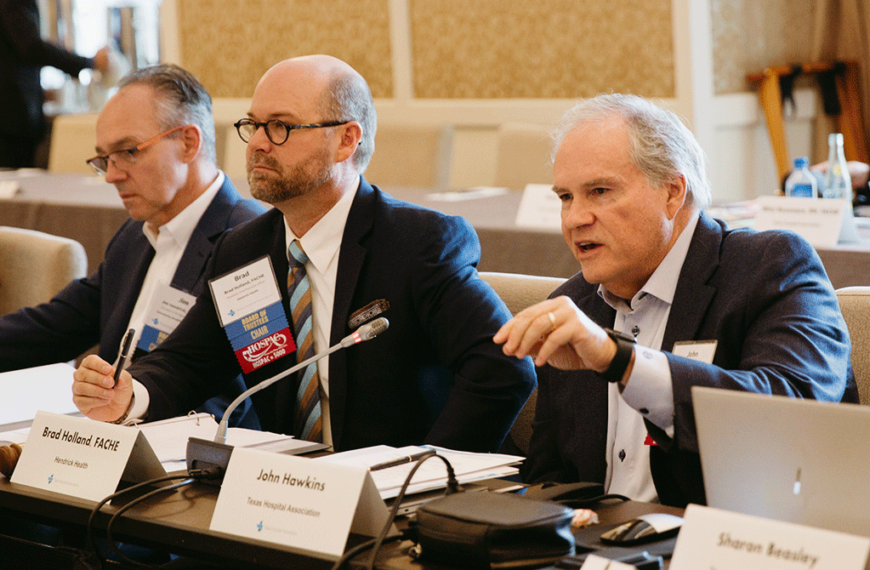This article is sponsored by Keypath Education.
While shortages dominate headlines, the challenges within the nursing workforce extend far beyond the numbers. Increased demand for health care services, coupled with strained resources and an aging population, is leading to nurse burnout and creating a cycle of depletion within the workforce. As experienced nurses leave the profession, the loss of their expertise poses a risk to patient care and safety. Efforts to increase the number of new nurses entering the field don’t address this gap in experience, raising concerns about how we will guide new nurses on their path to professional competency.
The Experience Gap
The efficacy of the nursing workforce relies heavily on experience. Historically, blending a few new graduates into a seasoned workforce was well-tolerated because the thumb of expertise was on the scales, allowing time for teaching and mentoring new nurses through orientation and beyond.
However, nearly 1 million Registered Nurses (RNs) are expected to retire by 2030, and they aren’t the only ones exiting the workforce. According to the 2022 National Nursing Workforce Study by the National Council of State Boards of Nursing (NCSBN) and The National Forum of State Nursing Workforce Centers, around 800,000 RNs, approximately 20% of the workforce, plan to leave nursing by 2027.
With this turnover of experience, the preparedness of the new graduate workforce becomes crucial. However, an influx of new graduates creates yet another strain on the very same resources that desperately need them, due to the time and cost involved in bridging the divide between the academic preparation they’ve received and the practice-ready skillset they need to thrive in a clinical setting.
Bridging the Divide Between Education and Practice
Step one in aligning education and practice is alignment within education. With pathways to RN licensure spanning diploma programs and associate’s (ADN), bachelor’s (BSN), and direct-entry master’s degrees (DE-MSN) – with differences in granting institution and program length – there are inherent differences in curriculum, standards, and preparation. The bridge to practice is built on a shaky foundation without consensus from stakeholders on the critical competencies newly licensed RNs should have on entry to practice.
The American Association of Colleges of Nursing (AACN) and the American Organization for Nursing Leadership (AONL) established a joint task force on academic-practice partnerships in 2012, prioritizing bridging the gap and outlining guiding principles, including collaboration, commitment, and accountability. Ideally, this entails fostering meaningful collaborations between educational institutions and health care facilities to identify areas of improvement, align on divergent expectations, and assess opportunities for mutual support, like accommodating more students for clinicals and scheduling clinicals to reinforce practical skills and problem-solving more effectively. In practice, many existing programs are ineffective, lacking the necessary transparency and collaboration.
The final divide is that within the hospital, where the department leading educational and professional development and that leading the hiring and staffing of nurses generally exist in separate silos with separate goals and responsibilities. Integrating the efforts of education and hiring departments and aligning goals could shift the view of clinical experiences to be an integral part of orientation, treating students as future employees and building an effective placement-to-employment pipeline.
Reimagining Clinical Skills Development
The onboarding of new nurse graduates is time and resource-heavy, not solely because the education-practice gap exists, but because with each new nurse, the depth and breadth of the gap is unknown. Hospitals often reinvent the wheel during orientation, paying for modules and classroom sessions – in addition to precepted time – to close the gap rather than making any assumptions that would leave new nurses unprepared at the end of orientation.
Reimagining clinical skills development – how skills and competencies are taught, measured, tracked, and communicated – with collaborative buy-in across the health care ecosystem could reduce these duplicative efforts and create a more effective transition to practice. The solution is twofold: rethinking competency with a holistic approach to the critical elements necessary to safely entrust a new nurse to a task and implementing a robust, tech-enabled solution to provide visibility and accountability along that journey for the new nurse graduates, educators, and nurse leaders.
A comprehensive onboarding experience contributes to the self-efficacy and confidence of new graduate nurses, hastening practice readiness and improving early job satisfaction, enculturation, and, eventually, retention. Will closing the skills gap and reimagining competency directly replicate experience? Of course not. But, addressing the nursing workforce crisis requires more than just filling vacancies—it demands a fundamental shift in how we prepare and support nurses for clinical practice, building a sustainable solution to the continued development of a competent and resilient nursing workforce.
Keypath Connect, powered by Keypath Education, reimagines the transition to practice to address the need for sustainable solutions for developing a competent and practice-ready nursing workforce. Learn more.
Related articles from The Scope
Measuring the Impact of Workplace Violence Prevention Programs in Hospitals
A workplace violence prevention program is only as strong as…
Clearing the Pipeline: Workforce Shortages Still Haunt Texas Hospitals
Earlier this month, the Governor’s Task Force on Health Care…
Two Texas Hospitals Prepare the Next Generation of Health Care Workers
In a groundbreaking move to enhance health care education, Baylor…
Navigating Texas Hospital Trends: Workforce, Costs, and Innovation
This article is sponsored by VativoRx, a leader in rebate…
Need a Leader? Call a Nurse.
Frontline nurses are equally skilled in compassionate bedside manner as…
THA, TNA Release New Toolkit to Help Hospitals Prevent Workplace Violence
Following the passage earlier this year of two crucial new…






